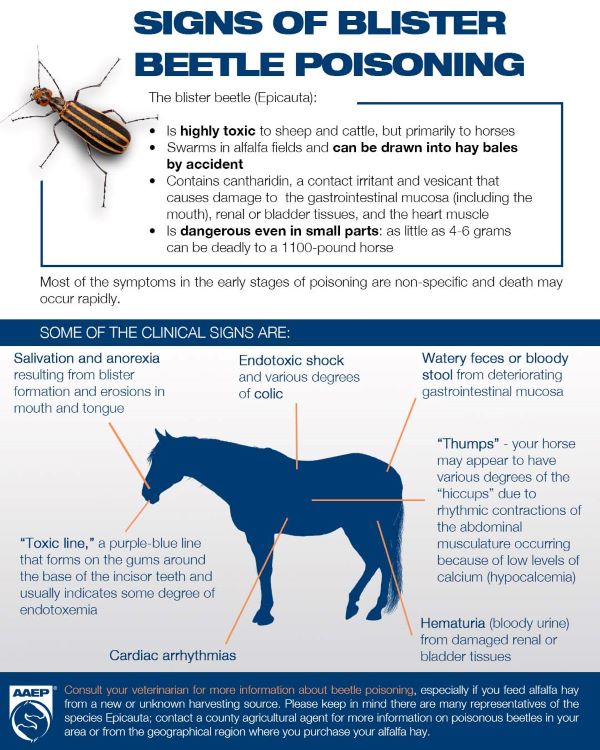Signs of Blister Beetle Poisoning
From AAEP:
Here is your reminder to check your alfalfa for the presence of blister beetle prior to feeding it to your horses—especially if you feed alfalfa hay from a new or unknown harvesting source.
“The blister beetle (Epicauta) is highly toxic to sheep and cattle, but primarily to horses,” says AAEP member Dr. Benjamin Espy. “As little as four (4) to six (6) grams of blister beetles can be deadly to a 1100-pound horse. Blister beetles swarm in alfalfa fields and are drawn into bales by accident. Even small parts of these beetles are toxic to a horse, and whole insects need not be present to be dangerous. Although cantharidin can exist in the alfalfa used to make pellets and cubes, cantharidin toxicity is very rare by this route. Some people believe that it has to do with the processing, others believe that it’s because the feed companies are using alfalfa from reputable sources that have good insect control.”
If you suspect your horse is showing signs of toxicity, call your veterinarian immediately. While there is no antidote for the toxin found in blister beetles, your veterinarian may still be able to save your horse by providing supportive care to combat dehydration, help evacuate toxins from the gastrointestinal tract and delay potential absorption. Since there are many representatives of the species Epicauta, contact your local agricultural agent so they can help you identify any beetle that looks suspicious.
Read Dr. Espy’s article on blister beetle poisoning on our website:











